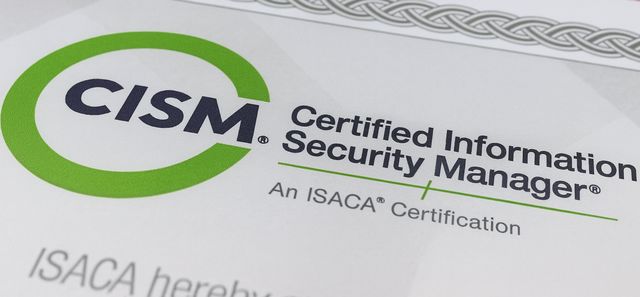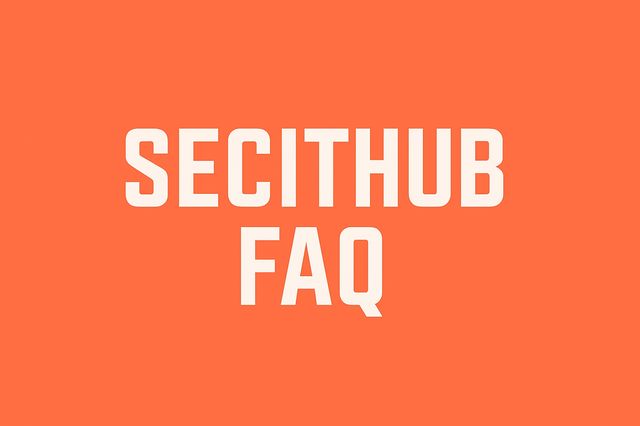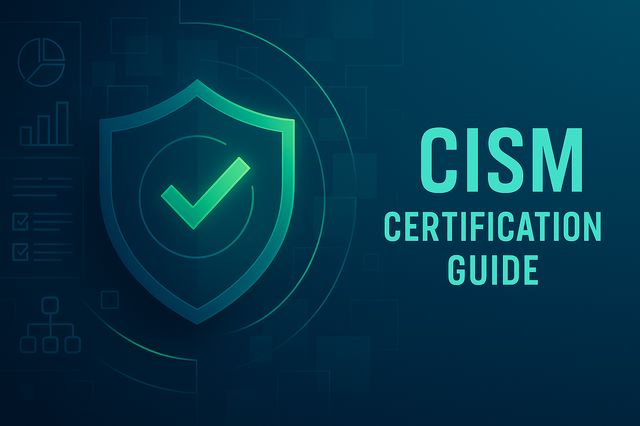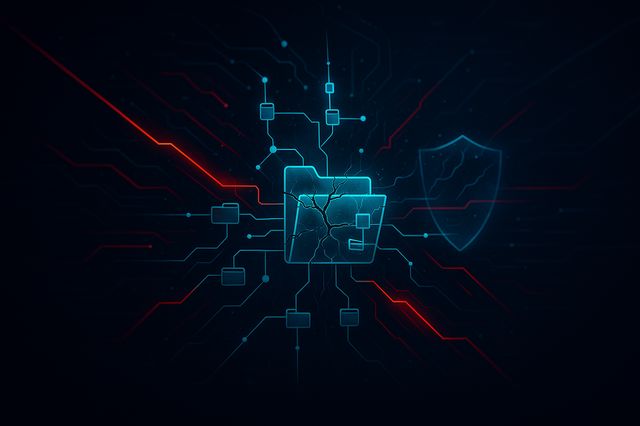This CISM Certification Guide goes far beyond explaining the exam. It gives cybersecurity and IT leaders a clear path to becoming true security managers the kind who build structured governance, reduce organizational risk, communicate effectively with executives, and run security programs that actually protect the business. Whether you’re aiming for your first management role or strengthening an existing one, this guide breaks down everything you need to understand: requirements, costs, preparation strategy, leadership skills, and the real-world impact CISM brings to modern organizations.
Why CISM Became a Must-Have for Modern Security Leaders
No one owned the security program end-to-end. Policies were outdated. Risk was handled reactively. Incidents were managed informally. And while each engineer worked hard, the team lacked governance the glue that ties everything together.
That’s exactly the gap the CISM Certification Guide helps close.
CISM isn’t about turning screws or configuring endpoints. It’s about learning how to run a security program like a business function one that aligns with strategy, communicates clearly with leadership, manages risk in a structured way, and responds to incidents with discipline rather than panic.
“Tools don’t build resilience. Governance does.”
CISM has earned its reputation because it teaches security leaders how to think beyond alerts and dashboards. It teaches how to design programs that last.
Need a deeper look at governance and controls? Explore Simplifying HIPAA for Pharma Executives

In 2025, security leaders especially in SMB environments are expected to operate with the maturity of enterprise CISOs, but without the luxury of enterprise budgets or staffing. They face increasing regulatory demands, expanding attack surfaces, and executives who want clear, measurable assurance that risks are under control.
CISM matters because it provides something most certifications don’t:
a structured, globally recognized framework for managing security, not just implementing it.
It helps leaders answer the questions that executives care about:
- Are we protected at a program level not just technically?
- Do we understand our top risks and how to reduce them?
- Are our controls aligned with business priorities?
- Can we prove compliance and governance during audits?
- Can our team handle an incident from start to finish?
CISM gives professionals the language, structure, and confidence to lead, not just operate.
Want the full certification roadmap? Read Cyber Security Certifications Guide | Part 1
The CISM Framework | What It Really Measures
CISM is intentionally different from technical certifications. Instead of focusing on configurations or tools, it evaluates how well you can design and manage a real security program.
The Four Domains Explained in Plain Language
Information Security Governance
This domain ensures you understand how to build the foundations of a security program: policies, strategic direction, executive alignment, and measurable objectives. It’s about defining how security supports the organization’s mission rather than operating as a disconnected technical silo.
Information Risk Management & Compliance
This is the heart of CISM identifying, prioritizing, and treating risk. It goes far beyond “risk assessments.” It teaches how to make decisions under uncertainty, how to interpret business impact, and how to support compliance without creating bureaucracy.
Information Security Program Development & Management
Here, you learn how to turn strategy into daily operations. This includes building processes, choosing appropriate controls, setting metrics, managing teams, and ensuring the program scales as the business grows.
Incident Management
Incidents are inevitable, and this domain focuses on readiness, response, and recovery. It ensures you can lead an incident the way executives expect structured, documented, and aligned to business continuity.
Through these four areas, CISM evaluates whether you can move from “firefighter mode” to building a security program that is predictable, repeatable, and resilient.
Requirements for Earning the CISM Certification
The CISM certification requires more than passing a test it requires proof that you’ve led real security activities.
Passing the Exam
The exam itself is challenging, but fair.
It includes 150 questions over four hours, focusing heavily on scenario-based thinking.
You pass by achieving a scaled score of 450 on a 200–800 scale.
One of the strengths of CISM is that you can take the exam even if you don’t yet meet the professional experience requirement. Many candidates choose this path and then apply for certification once they qualify.
Professional Experience Requirements
To earn the certification, you must demonstrate:
- At least 5 years of professional information security management experience
- Experience must fall within the last 10 years
- Experience must cover 3 of the 4 CISM domains
- At least 3 years must include management-level responsibilities
This ensures that CISM holders don’t just understand management in theory they’ve lived it.
Application & Verification
After passing the exam:
- You pay a one-time $50 application fee
- You submit documented work experience
- Supervisors verify your involvement
- You submit everything within 5 years of passing
Maintaining the Certification
To remain certified, professionals must:
- Complete 120 CPE hours every 3 years
- Earn at least 20 hours annually
- Pay the annual maintenance fee
- Follow the ISACA Code of Professional Ethics
This ensures that CISM remains a living certification maintained by leaders who continue to grow professionally.
The True Cost of the CISM Certification
Earning the CISM certification requires both time and financial investment, but the costs are predictable and transparent.
Exam Cost
- $575 for ISACA Members
- $760 for Non-Members
Application Fee
Once you pass the exam, you pay a one-time $50 fee before submitting your experience.
Annual Maintenance
To maintain the certification each year:
- Members: $45
- Non-Members: $85
These fees support CPE tracking, certification processing, and program updates.
Additional Costs (Optional but Common)
Many candidates choose to accelerate their preparation by investing in study materials or structured training.
This may include:
- Official ISACA review manuals
- Third-party practice questions
- Online courses
- Bootcamps, which range from several hundred to over $1,000
Additionally, candidates who fail the exam must pay the same exam fee again for retakes another reason preparation matters.
CISM is not cheap, but its ROI is consistently among the highest in the industry because it directly supports leadership-level progression.
CISM vs CISSP | A Real Comparison for Real Leaders
Many professionals debate whether CISM or CISSP is “better.”
The truth? They are designed for different types of leaders.
CISSP blends technical depth with broad management knowledge across eight security domains. It suits architects, advanced engineers, analysts, and technical managers.
CISM, on the other hand, is for leaders who own strategy, governance, compliance, and security program management.
| Feature | CISSP | CISM |
|---|---|---|
| Exam Length | ~3 hours | 4 hours |
| Questions | ~100–150 | 150 |
| Passing Score | 700/1000 | 450/800 |
| Exam Fee | ~$749 | $575–$760 |
| Application Fee | None | $50 |
| Annual Maintenance | $135 | $45–$85 |
| Experience Requirement | 5 years security | 5 years security management |
CISM is about leadership. CISSP is about technical mastery. Together, they create a complete security professional.
How to Prepare Effectively | Without Burning Out
Preparing for CISM doesn’t require heroics. It requires structure.
The best preparation approach is grounded in mastery of concepts rather than memorization. Instead of cramming hundreds of flashcards, focus on understanding how a security leader makes decisions.
A strong study rhythm might look like this:
- Begin by reviewing each domain and connecting it to your real-world experience
- Identify gaps in your knowledge and reinforce them with study guides
- Practice scenario-based questions to understand exam logic
- Create a personal “leadership map” that links governance, risk, programs, and incidents
- Finish with full practice exams to refine timing and confidence
CISM rewards mature thinking. If you treat your preparation as leadership development not exam studying you’ll be ready.
CISM Is the Fastest Path to Modern Security Leadership
CISM is more than a certification it’s a mindset. It teaches leaders how to build order out of chaos, turn fragmented controls into structured programs, and speak the language of executives.
For SMBs facing nonstop threats with limited budgets, having someone who thinks like a CISM-certified leader can be the difference between a reactive IT operation and a mature, resilient security program.
If you’re ready to step into true security leadership, this CISM Certification Guide is your roadmap.

A globally recognized credential that validates real-world experience in security governance, risk management, and security program leadership.
Yes. You can pass the exam now and submit your experience later within 5 years.
Four hours, 150 multiple-choice questions.
A scaled score of 450 on a 200–800 scale.
$575–$760 for the exam, $50 application fee, and $45–$85 annual maintenance.
120 hours every 3 years, with at least 20 hours annually.
Neither is better they serve different purposes. CISM focuses on managerial leadership, while CISSP blends technical depth with broad security knowledge.
References
What is the CISM difference? – isaca


